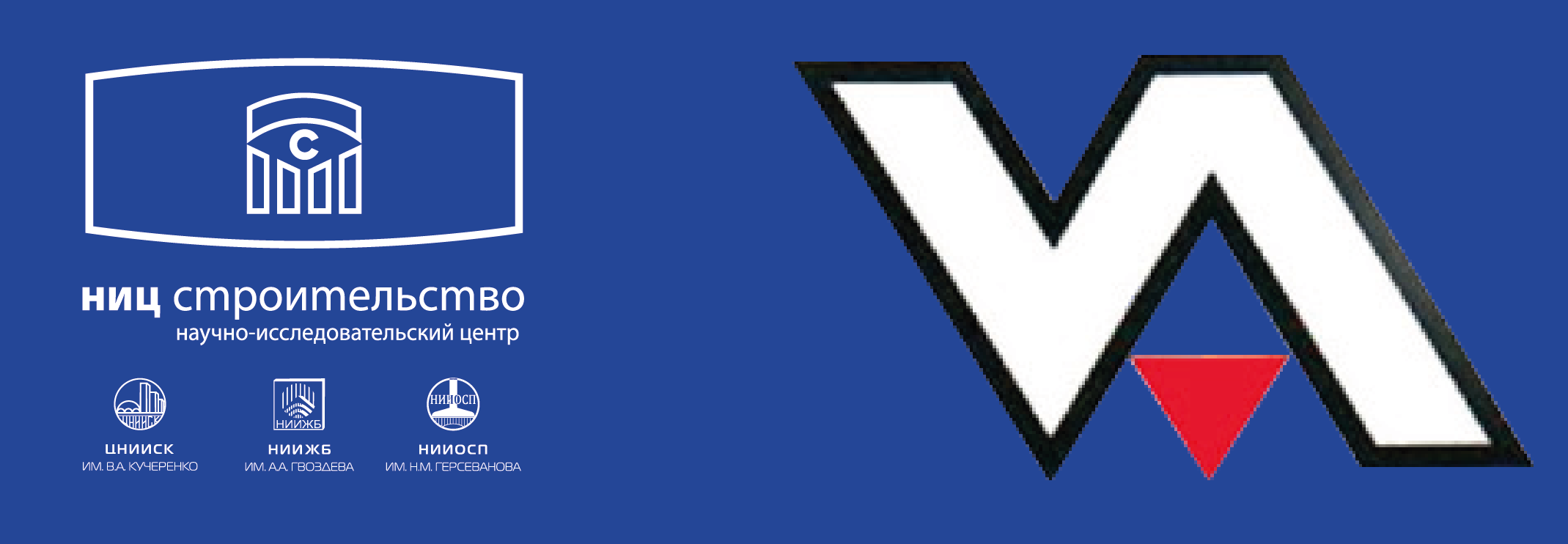Determination of the ability of migrating steel corrosion inhibitors to passivate corroding reinforcement in reinforced concrete structures
https://doi.org/10.37538/0005-9889-2023-5/6(619)-33-43
Abstract
Introduction. The corrosion condition of steel reinforcement in reinforced concrete structures and products is the main factor determining their bearing capacity and durability. The alkalinity of the pore liquid of concrete (at pH > 11.8) in reinforced concrete structures and products under normal conditions ensures the passive state of steel reinforcement. In the presence or when chloride, sulfate and other analogous ions enter the concrete, the steel reinforcement of reinforced concrete structures and products depassives, despite the pH value > 11.8, and begins to corrode. In addition, depassivation and subsequent corrosion of steel reinforcement occur during carbonation (neutralization) of the protective layer of concrete due to a decrease in pH < 11.8. One of the promising options for slowing down or stopping the corrosion processes of steel reinforcement is currently the use of migrating corrosion inhibitors.
The aim of the work was to obtain experimental data on the ability of migrating steel corrosion inhibitors to inhibit or completely stop the corrosion of reinforcement in reinforced concrete structures and products initiated by the presence of chloride ions (Cl-) in concrete or neutralization of the protective layer of concrete in relation to steel reinforcement.
Materials and methods. The following types of migrating steel corrosion inhibitors were used for testing:
– Cortec MCI-2020 (manufacturer – KORTEK RUS (KORTEK) LLC, suppliers – Ettrilat LLC, MONUMENT LLC);
– IFKHAN-80 (manufacturer and supplier – IFKHAN LLC);
– Basf Master-Protect 8000 CI (former name Protectosil ® CIT. Suppliers – MBS Construction Systems LLC, MPKM LLC, LKM-FLEET LLC).
The determination of the ability of migrating steel corrosion inhibitors to inhibit or completely stop the corrosion of reinforcement was carried out by accelerated electrochemical research methods in accordance with State Standard 31383-2008 "Protection of concrete and reinforced concrete structures from corrosion. Test methods".
Results. All three types of migrating steel corrosion inhibitors inhibit corrosion of steel reinforcement initiated by the presence of chloride ions in concrete by the age of 90 days. All three types of migrating steel corrosion inhibitors by the age of 30 days do not inhibit the corrosion of steel reinforcement initiated by concrete carbonation.
Conclusions. According to the results of the work, it was revealed that the migrating steel corrosion inhibitors inhibit the corrosion of steel reinforcement initiated by the presence of chloride ions in concrete, while the corrosion initiated by the carbonation of concrete is not slowed down or stopped by migrating steel corrosion inhibitors.
About the Authors
Z. U. BeppaevRussian Federation
Zamir U. Beppaev*, Cand. Sci. (Engineering), Head of the Laboratory of the Survey and Ensure Durability of Concrete and Concrete Structures, Research Institute of Concrete and Reinforced Concrete named after A.A. Gvozdev, JSC Research Center of Construction, Moscow
e-mail: beton61@mail.ru
L. H. Astvatsaturova
Russian Federation
Lidia H. Astvatsaturova, Senior Researcher of the Laboratory of the Survey and Ensure Durability of Concrete and Concrete Structures, Research Institute of Concrete and Reinforced Concrete named after A.A. Gvozdev, JSC Research Center of Construction, Moscow
e-mail: beton61@mail.ru
S. A. Kolodyazhniy
Russian Federation
Sergey A. Kolodyazhniy, Researcher of the Laboratory of the Survey and Ensure Durability of Concrete and Concrete Structures, Research Institute of Concrete and Reinforced Concrete named after A.A. Gvozdev, JSC Research Center of Construction, Moscow
e-mail: beton61@mail.ru
S. A. Vernigora
Russian Federation
Sergey A. Vernigora, Junior Researcher of the Laboratory of the Survey and Ensure Durability of Concrete and Concrete Structures, Research Institute of Concrete and Reinforced Concrete named after A.A. Gvozdev, JSC Research Center of Construction, Moscow
e-mail: nkv1956@yandex.ru
V. V. Lopatinskiy
Russian Federation
Vladislav V. Lopatinskiy, Engineer of the Laboratory of the Survey and Ensure Durability of Concrete and Concrete Structures, Research Institute of Concrete and Reinforced Concrete named after A.A. Gvozdev, JSC Research Center of Construction, Moscow
e-mail: labor9@mail.ru
References
1. Rosenfeld I.L. Corrosion and protection of metals. Moscow: Metallurgy; 1969. 448 p. (In Russian).
2. Kuznetsov Y.I., Andreev N.N., Marshakov A.I. Physicochemical aspects of metal corrosion inhibition. <i>Russian Journal of Physical Chemistry</i>. 2020, vol. 94, no. 3, pp. 505–515. (In Russian).
3. State Standard 31383-2008. Protection against corrosion of concrete and reinforced concrete constructions. Test methods. Moscow: Standartinform Publ.; 2010. (In Russian).
Review
For citations:
Beppaev Z.U., Astvatsaturova L.H., Kolodyazhniy S.A., Vernigora S.A., Lopatinskiy V.V. Determination of the ability of migrating steel corrosion inhibitors to passivate corroding reinforcement in reinforced concrete structures. Concrete and Reinforced Concrete. 2023;619(5/6):33-43. (In Russ.) https://doi.org/10.37538/0005-9889-2023-5/6(619)-33-43












